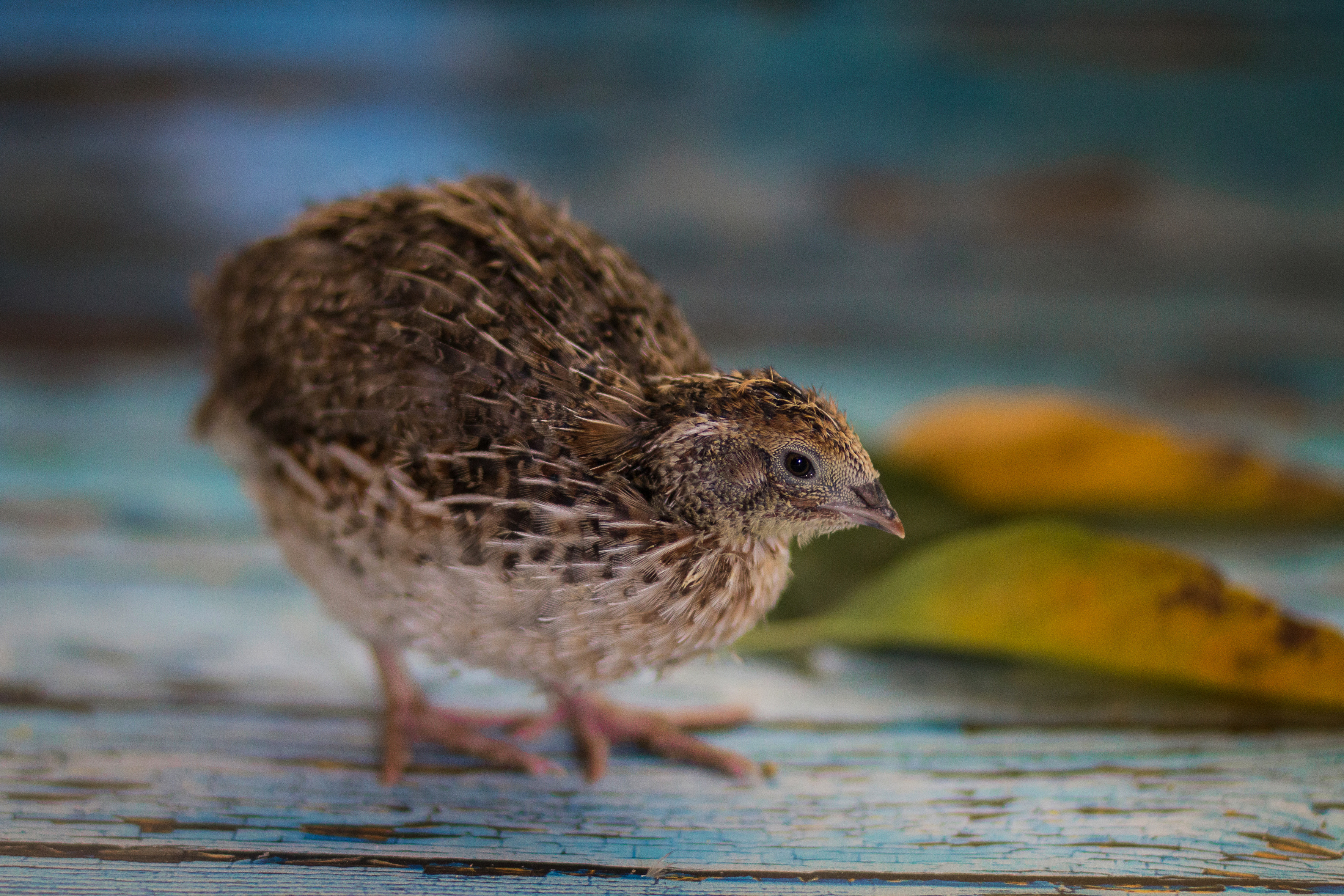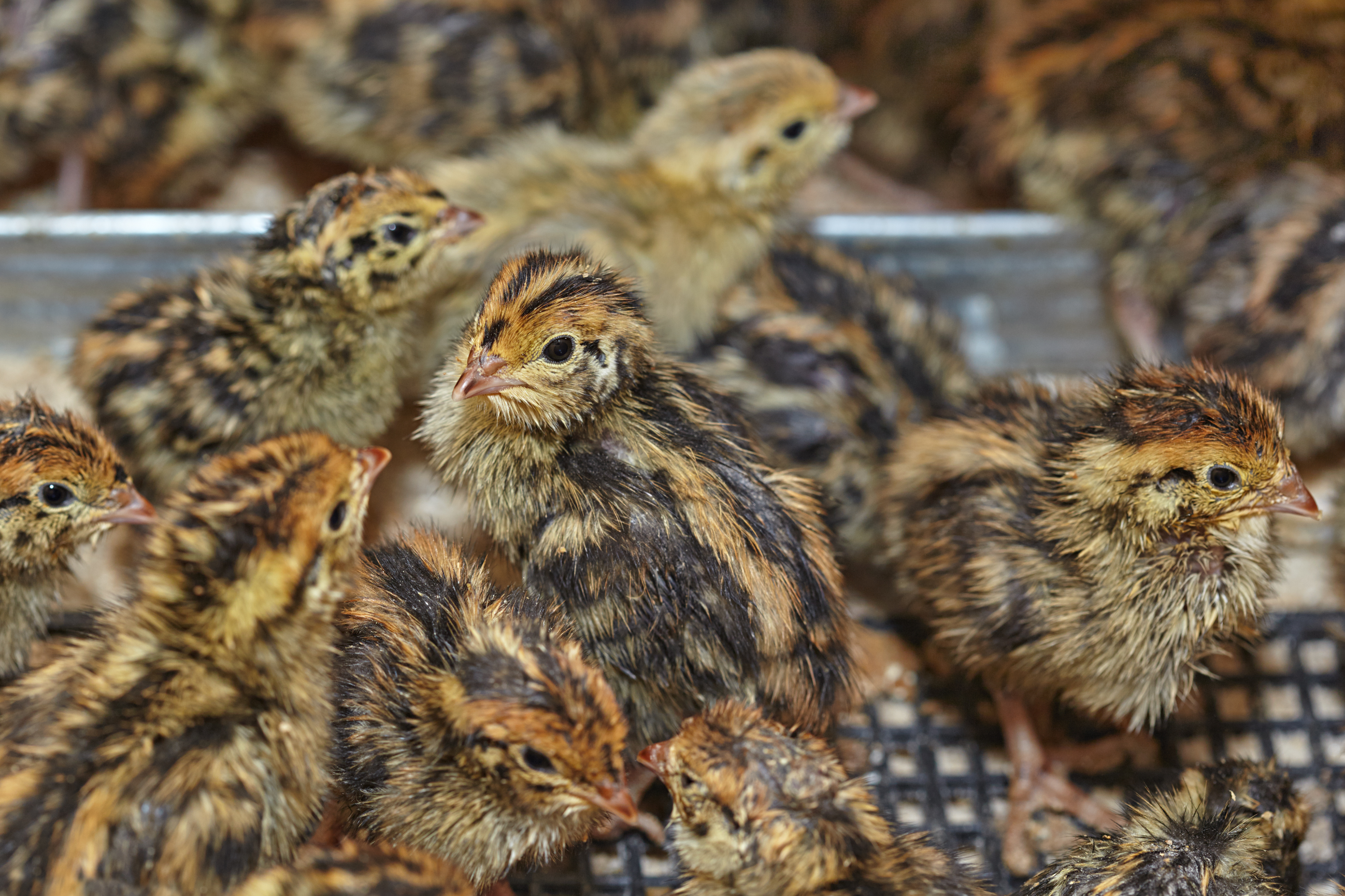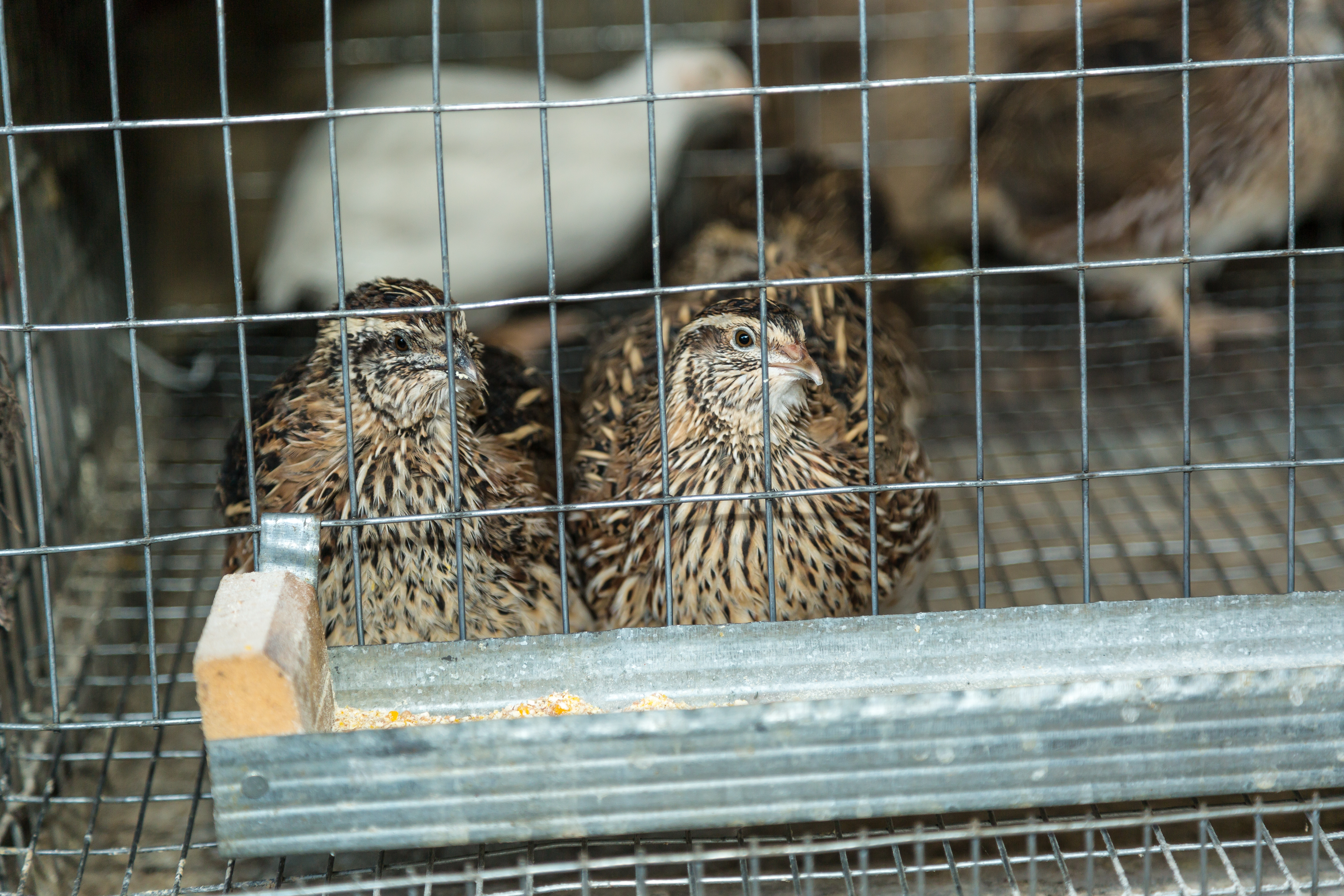



The welfare of Japanese quail on farms
Quail are an increasingly popular species among poultry farmers, but their timidity and capacity for flight mean they have special needs when it comes to welfare. Here, we outline the main concerns.The Japanese quail is a surprisingly diverse animal. Its small size, rapid growth rate and high production efficiency make it an ideal species for use on the farm and in the laboratory and, in some countries, quail are farmed for release as game birds.
Originating from China and Japan, the Japanese quail is now farmed around the world, and the quail industry provides a good source of income and employment in low-income countries. For example, the quail industry is undergoing rapid expansion in Brazil. Typically, Japanese quail are farmed for eggs in China and South-East Asian countries, and farmed for meat in Europe and America.
Quail are small, ground-dwelling birds that seek shelter in grassy areas and under low shrubs, and will take flight if startled. Like most poultry species they nest on the ground; unlike most poultry species, however, the males are territorial and will immediately attack unfamiliar males that intrude on their territory.
This life-history pattern combined with a relatively recent period of domestication mean that Japanese quails are susceptible to a number of welfare challenges in commercial farming systems, and for anyone interested in rearing them it’s essential to understand the main issues faced by Japanese quail on farms.

Feather-pecking also affects quails
The tendency for female quails to hide their eggs on the ground means that they are terrible floor layers. This has resulted in most breeding stock and layers being housed in cages, where the eggs can be more easily and hygienically collected. In comparison, quail raised for meat are loose-housed indoors on litter in groups of several thousand. The ability of quail to fly means that all housing systems must be located indoors, as otherwise they would escape under free-ranging conditions.
Housing quail in cages, though, can lead to several behavioural problems for these birds. Similar to other poultry species, quail can develop feather-pecking and cannibalism behaviours when housed in large groups on wire mesh without access to litter.
This is typically addressed using beak trimming with a cautery blade from as early as two weeks of age (Randall and Bolla, 2008), which is a painful procedure for the birds. Other methods for reducing the rate of feather pecking include maintaining low light levels, reducing crowding and increasing the amount of dietary fibre and grit (Randall and Bolla, 2008). Avoiding stressors is also important, as quail can start to feather peck rapidly if experiencing a stressor such as sudden feed or water deprivation.

Quails have a flighty nature
A second issue associated with keeping quail in cages is their flighty nature. When startled, the quail’s instinctive escape response is to fly straight up into the air. When this escape response occurs in a cage, they hit their heads on the roof, leading to injuries and even mortalities in extreme cases.
Constructing the cage roofs out of solid sheets of metal or plywood and keeping the roof height to around 25cm will help to reduce injuries caused by this behaviour. Providing shelter within the cages, such as small covered boxes, has also been shown to reduce this flight escape response (Buchwalder and Wechsler, 1997), and could provide a means of reducing head banging in commercial conditions.
Providing shelter may also reduce general fearfulness in commercial quail. Their flighty nature means that they prefer to remain hidden amongst grass and vegetation and may feel visually exposed when housed in cages. One study investigating the behaviour of Japanese quail in aviaries found that they spent almost half of their time (48 percent) hiding amongst the plants and preferred to lay their eggs in hidden locations rather than out in the open, as occurs in cages (Schmid and Wechsler, 1997).
Another study found that placing an opaque wall in the pen provided quail with a sufficient amount of hiding space to cause a reduced stress response (Guesdon et al, 2011). A fascinating consequence of this shelter treatment was that the offspring of these quail also showed less fearful behaviour, as they were exposed to less stress hormones while developing in the egg.

Male quail behaviours
While providing shelter to Japanese quail under commercial conditions is likely to have benefits for reducing the amount of fear that they experience, providing shelter has not been shown to reduce the incidence of aggressive pecking between male birds, and this can be a significant welfare problem for Japanese quail.
The territorial nature of male quail means that males will attack one another viciously when housed together, aiming their pecks at the head and eyes of their opponent. This can cause injuries to the head and eyelids, and even result in the loss of an eye.
Housing breeding quail in pairs or in small groups of one male and up to 12 females can avoid this problem while still achieving acceptable fertility rates (Wechsler and Schmid, 1998). Beak trimming male quail can reduce aggressive pecking, with potential improvements in welfare and productivity for the group (Khalil et al, 2015), but, again, this is a painful procedure that should be avoided if possible.
Japanese quail that are grown for meat are housed in very large mixed-sex groups, and male-to-male aggression is controlled in these birds by manipulating the photoperiod. Aggressive pecking generally only occurs after the quail have reached sexual maturity and keeping these birds in low light levels can delay sexual maturity until they reach slaughter weight at five to six weeks.
In conclusion, despite the increasing popularity of quail products around the globe, our knowledge of the behaviour and welfare of Japanese quail is lacking, and research in this area has been dwindling over the last decade.
There are many areas of quail husbandry that are just not well understood, such as the optimal methods of delivering environmental enrichment or the basic behavioural needs of quail for items such as shelter or dust baths, and this is a barrier to optimal quail welfare. To overcome this barrier, both industry and researchers must collaborate to better understand these small birds with a big future in the global livestock industry.
| References | ||||
|---|---|---|---|---|
| Buchwalder, T. & Wechsler, B. | ||||
| (1997) | The effect of cover on the behaviour of Japanese quail (Coturnix japonica). Applied Animal Behaviour Science | 54, 335-343 | ||
| Guesdon, V., Bertin, A., Houdelier, C., lumineau, S., Formanek, l., Kotrschal, K., Möstl, E. & Richard-Yris, M.-A. | ||||
| (2011) | A place to hide in the home-cage decreases yolk androgen levels and offspring emotional reactivity in Japanese quail. PLoS One | 6, e23941 | ||
| Khalil, H. A., Hanafy, A. M., Mekawy, A. I. & Mady, M. E. | ||||
| (2015) | Effect of males pecking behaviour on productive and physiological performance of Japanese quail and using some ways to reduce this behavior. Egyptian Poultry Science Journal | 35, 857-873 | ||
| Randall, M. & Bolla, G. | ||||
| (2008) | Raising Japanese quail. Primefacts, 602, 1-5 | 602, 1-5 | ||
| Schmid, I. & Wechsler, B. | ||||
| (1997) | Behaviour of Japanese quail (Coturnix japonica) kept in semi-natural aviaries. Applied Animal Behaviour Science | 55, 103-112 | ||
| Wechsler, B. & Schmid, I. | ||||
| (1998) | Aggressive pecking by males in breeding groups of Japanese quail (Coturnix japonica). British Poultry Science | 39, 333-339 |









